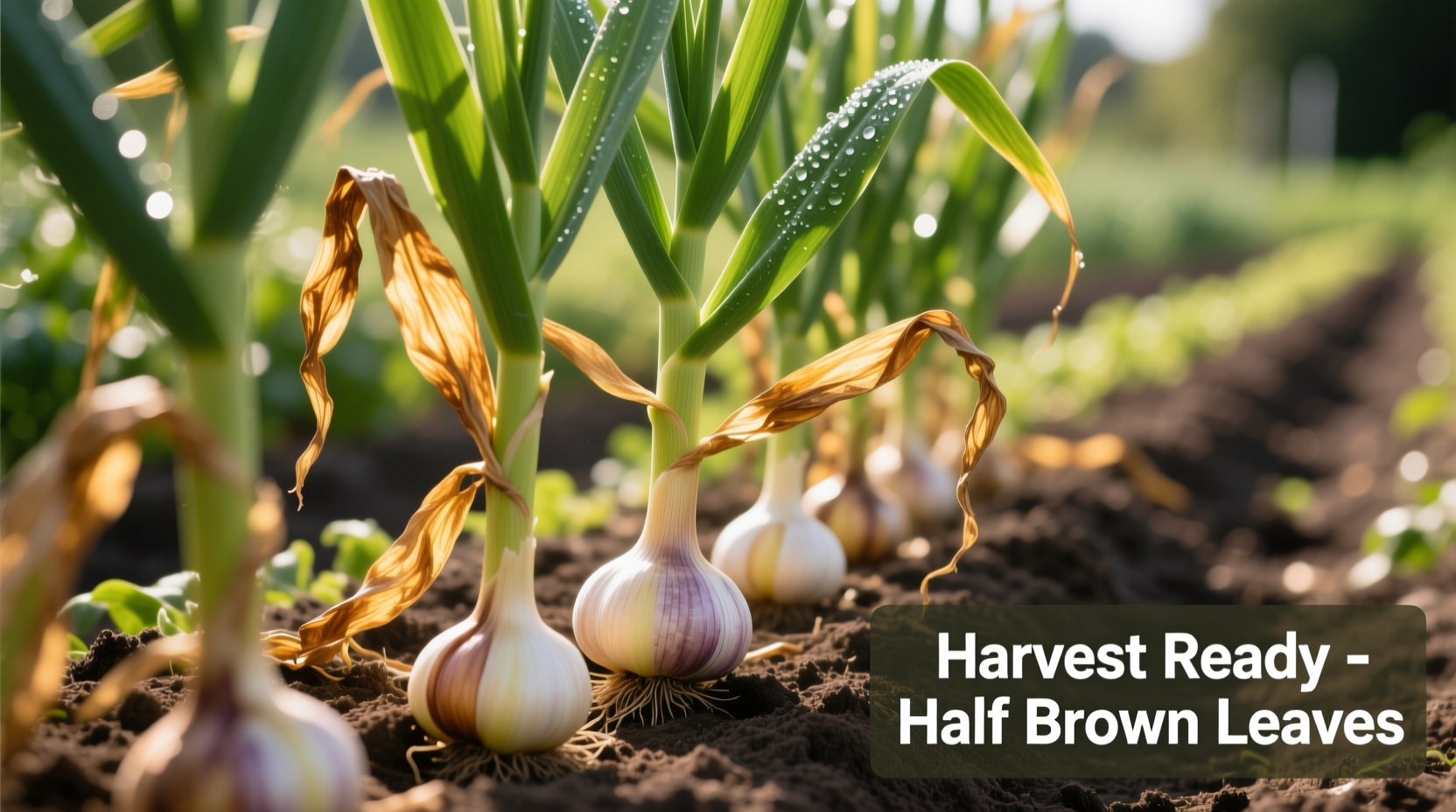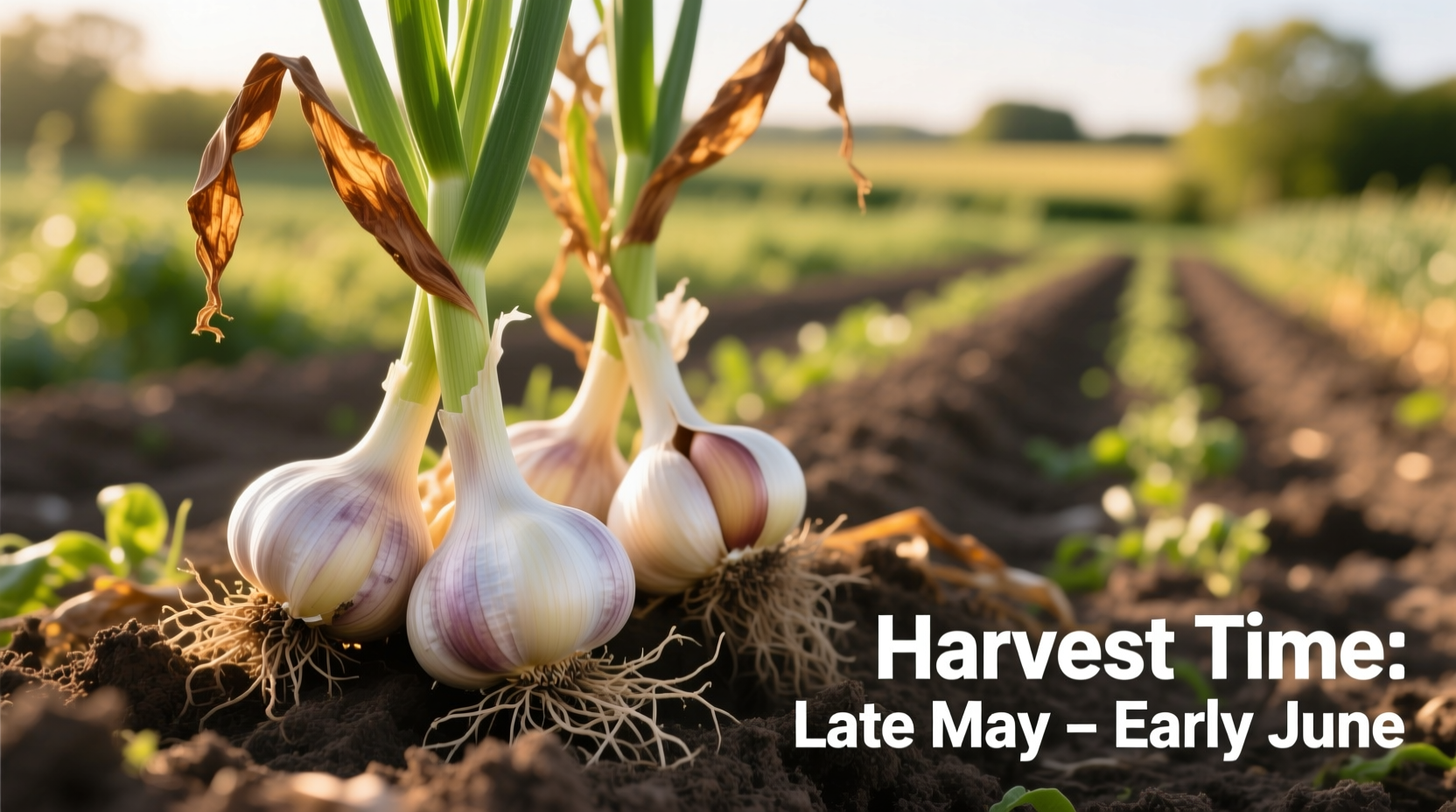Understanding Your Garlic's Growth Timeline
When you plant garlic in October, you're working with nature's seasonal rhythm. Here's what happens underground and above ground through the growing season:
Regional Harvest Timing Guide
Your exact harvest window depends significantly on your USDA hardiness zone. This table shows typical harvest periods for October-planted garlic:
| USDA Hardiness Zone | Typical Harvest Window | Key Visual Indicators |
|---|---|---|
| Zones 3-5 (Northern regions) | July 1 - July 20 | 4-5 green leaves remaining, 50% browning |
| Zones 6-7 (Mid-latitude) | June 15 - July 10 | Lower leaves brown, upper leaves green |
| Zones 8-10 (Southern regions) | June 1 - June 25 | Accelerated leaf dieback, check weekly |
According to research from University of Minnesota Extension, garlic planted in fall typically requires 8-9 months to reach maturity. The critical factor isn't calendar dates but rather the visual cues your plants provide as they approach harvest readiness.
Reading Your Garlic's Visual Signals
While calendar dates provide a general guideline, your garlic plants will tell you precisely when they're ready. Don't rely solely on the calendar - watch for these critical indicators:
- Leaf color progression - When about half of the leaves have turned brown or yellow while 4-5 upper leaves remain green, your garlic is ready
- Bulb wrapper condition - The protective wrapper around cloves should be intact but not overly tight
- Scape development (for hardneck varieties) - When scapes have curled once and begun to straighten
- Soil surface cracks - As bulbs swell, they may cause the soil to crack around the base of plants
Harvesting too early results in smaller bulbs with thin wrappers that don't store well. Waiting too long causes cloves to separate from the stem, creating 'exploded' bulbs that deteriorate quickly. The Oregon State University Extension confirms that proper timing extends storage life by 2-3 months compared to premature or delayed harvesting.

Step-by-Step Harvesting Process
When your garlic shows the right visual indicators, follow these steps for optimal results:
- Choose the right day - Harvest in the early morning or on a cloudy day to reduce sun exposure stress
- Prepare your tools - Use a garden fork rather than a shovel to minimize bulb damage
- Lift carefully - Insert fork 6 inches from plant base and gently loosen soil around bulbs
- Remove soil - Brush off excess dirt but don't wash bulbs at this stage
- Leave stems intact - Don't cut stems for at least two weeks during curing
Avoiding Common Harvest Mistakes
Many gardeners make these critical errors that compromise their garlic harvest:
- Harvesting based solely on calendar dates - Your specific microclimate matters more than generic dates
- Waiting for all leaves to die back - This indicates over-maturity and reduced storage potential
- Using excessive force when digging - Bruised bulbs won't cure properly and spoil faster
- Washing bulbs immediately after harvest - Moisture trapped in wrappers promotes mold during curing
Post-Harvest Processing for Maximum Storage
Proper curing and storage determines how long your harvest will last:
- Curing requirements - 2-3 weeks in a dry, shaded, well-ventilated area with stems intact
- Storage conditions - 60-65°F (15-18°C) with 60-70% humidity for long-term storage
- Trimming timeline - Cut stems to 1-2 inches after curing is complete
- Storage checkups - Inspect monthly and remove any bulbs showing signs of deterioration
Garlic harvested at the perfect time and properly cured can last 6-8 months in storage. Softneck varieties typically store longer than hardneck types, with some varieties maintaining quality for up to 12 months under ideal conditions.
Troubleshooting Harvest Challenges
When weather or other factors complicate your harvest timing:
- Wet harvest conditions - If rain is forecast, harvest early and increase air circulation during curing
- Premature leaf dieback - Could indicate disease; harvest immediately and inspect bulbs carefully
- Delayed harvest due to travel - Mulch heavily to protect bulbs and check daily for readiness
- Small bulb size - May indicate poor soil nutrition; amend soil for next season's planting











 浙公网安备
33010002000092号
浙公网安备
33010002000092号 浙B2-20120091-4
浙B2-20120091-4